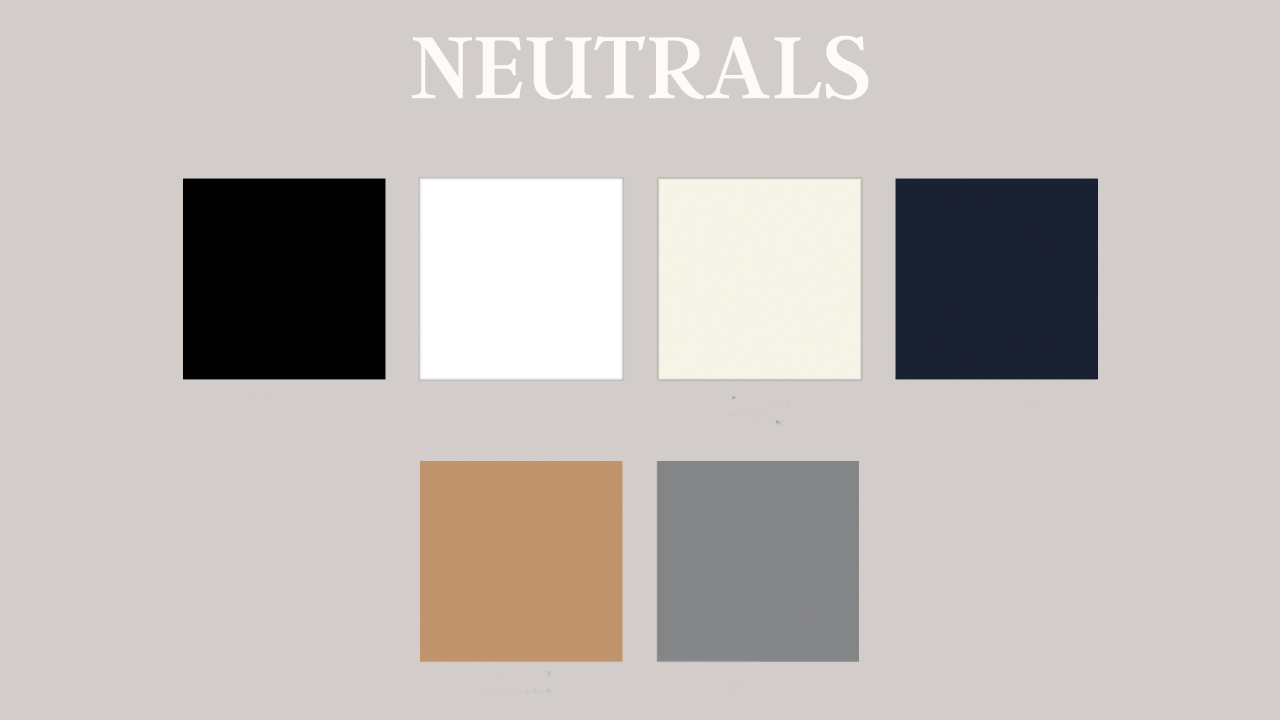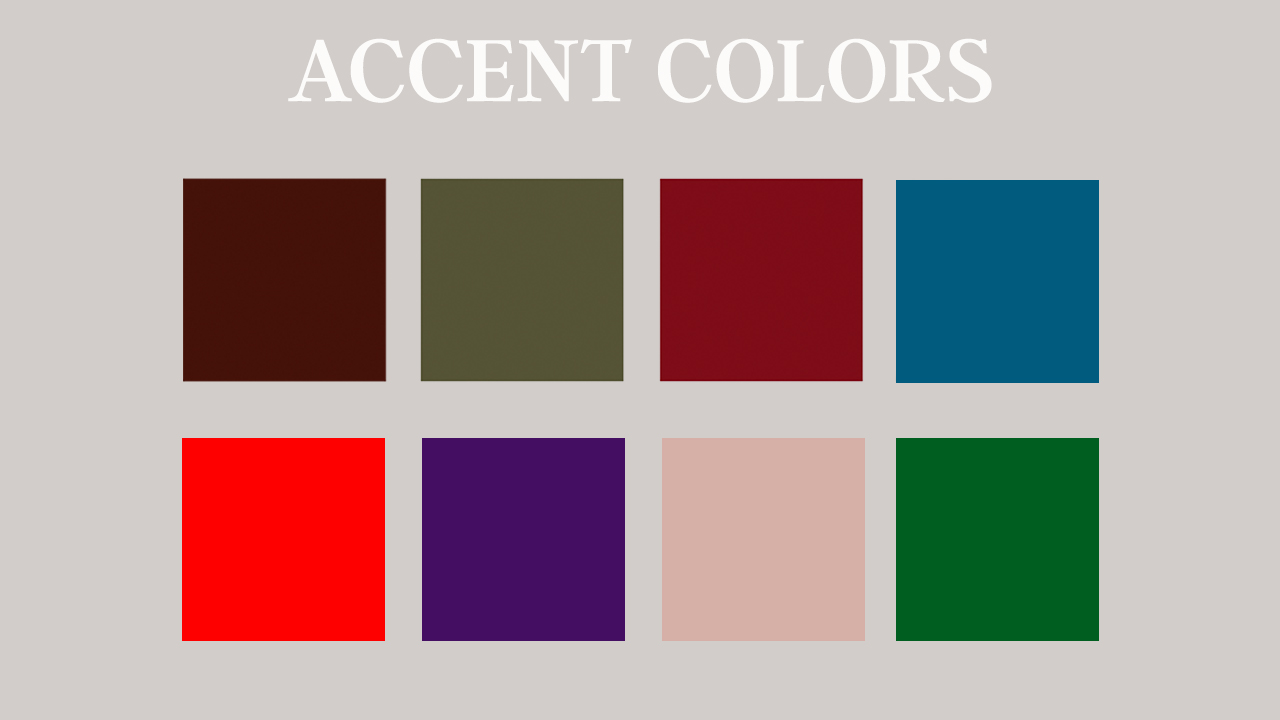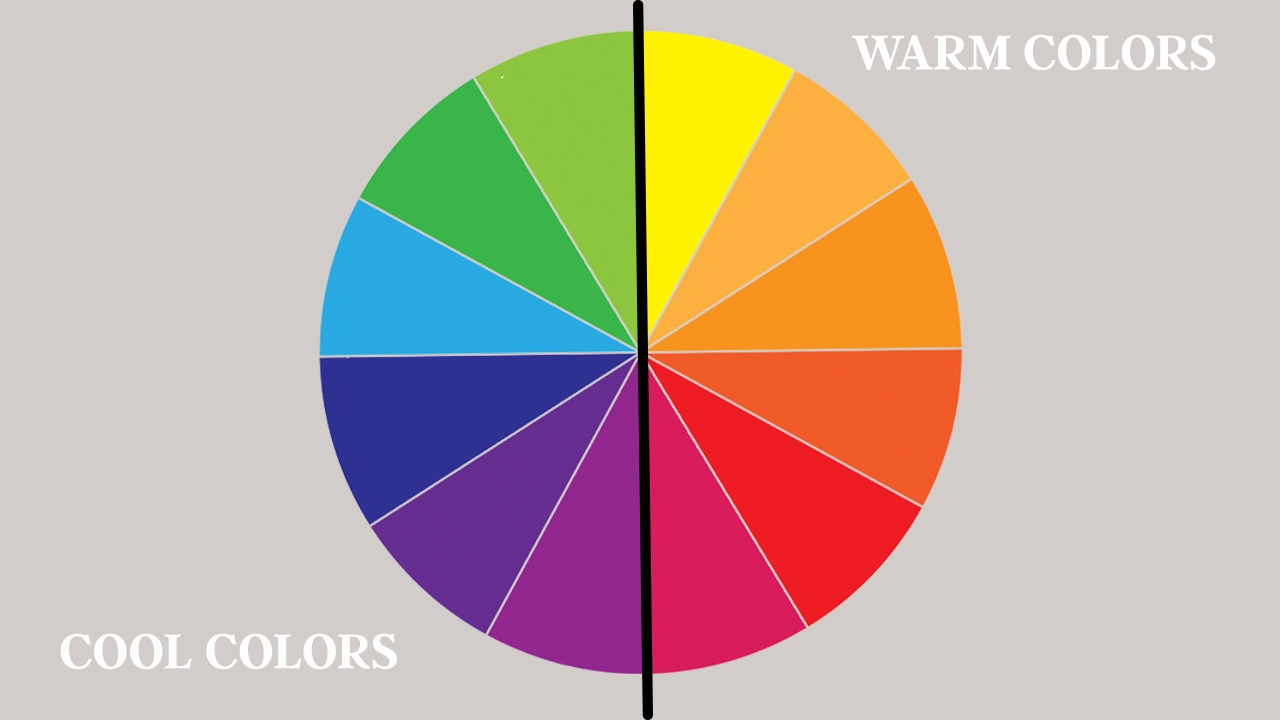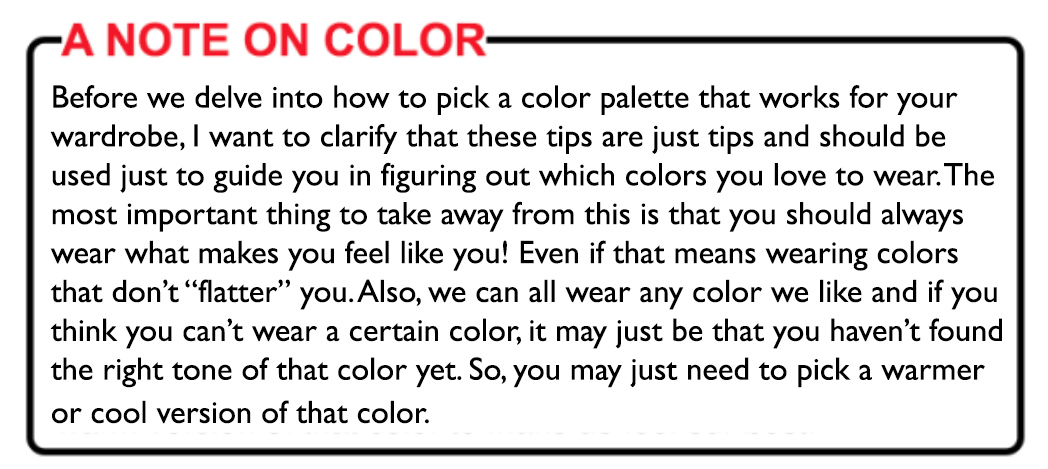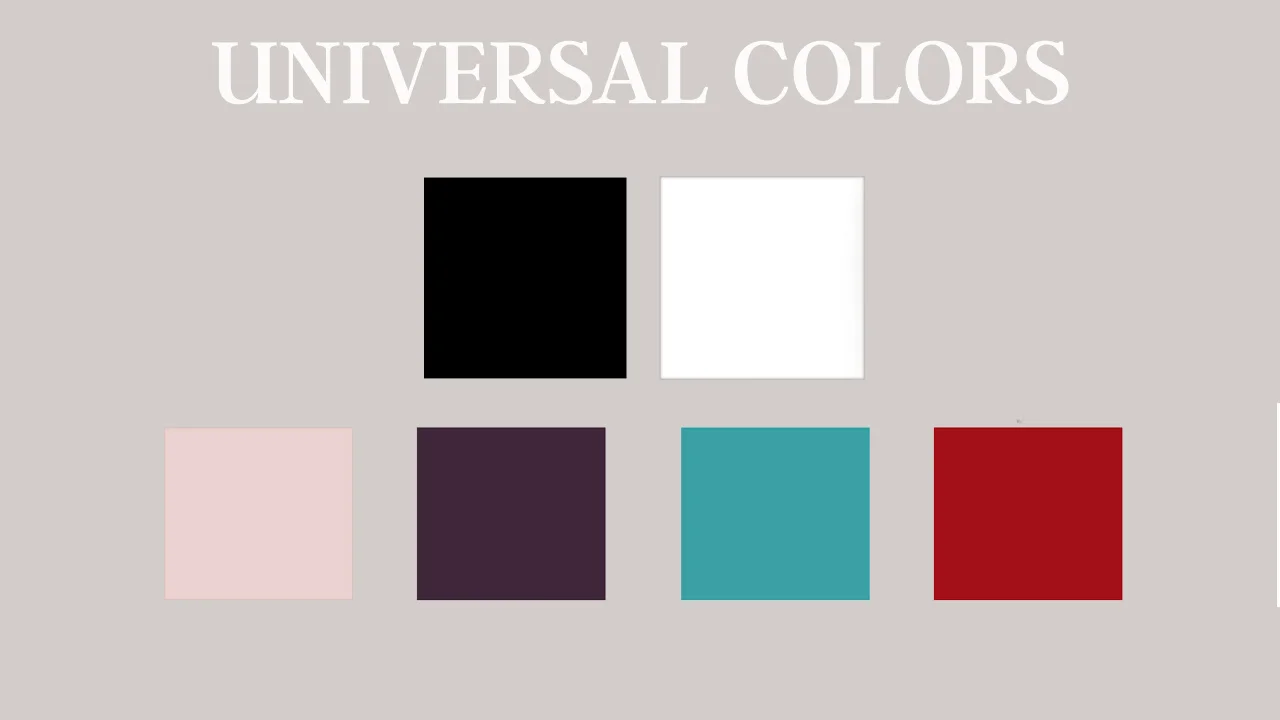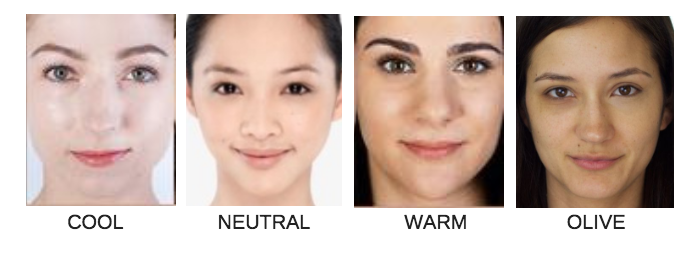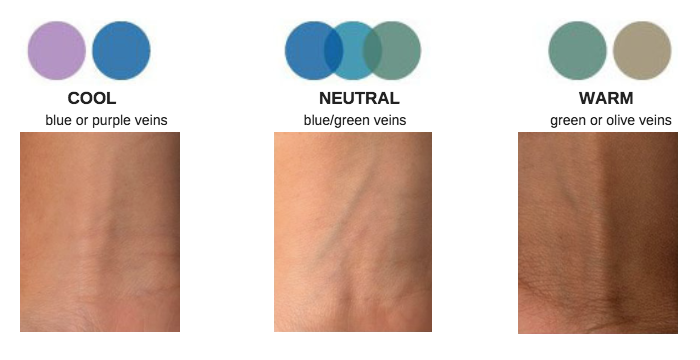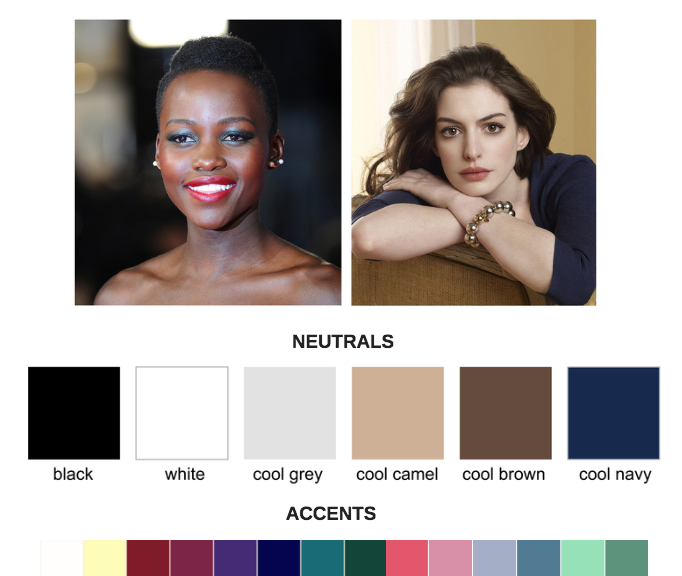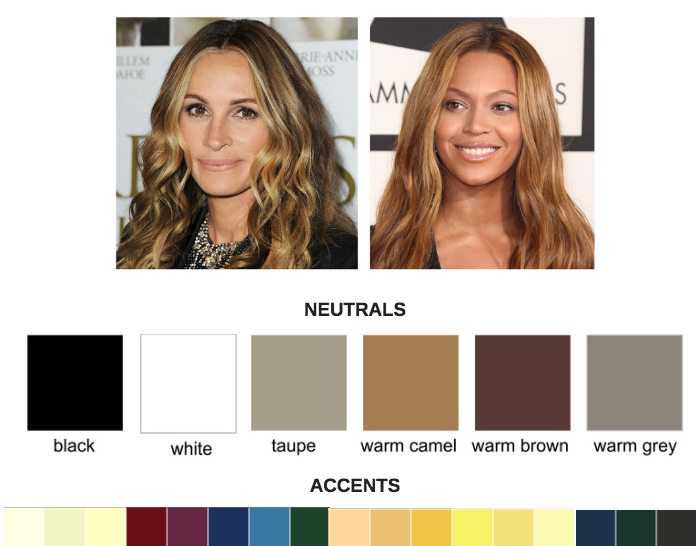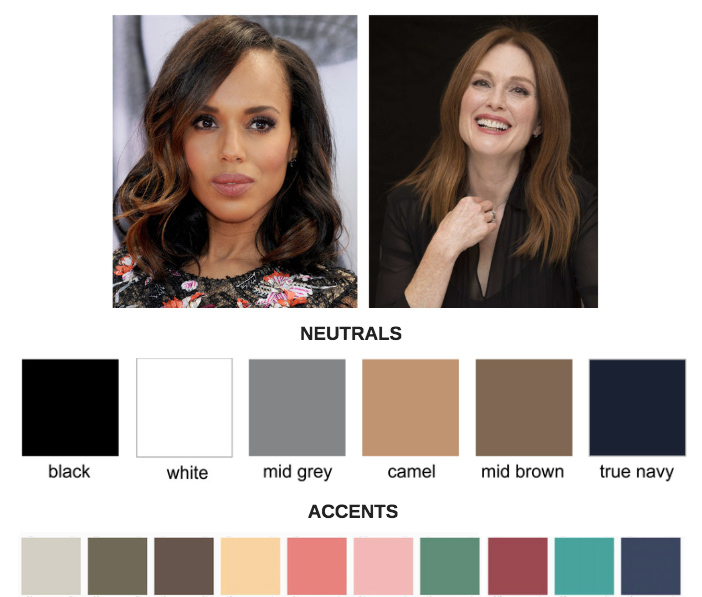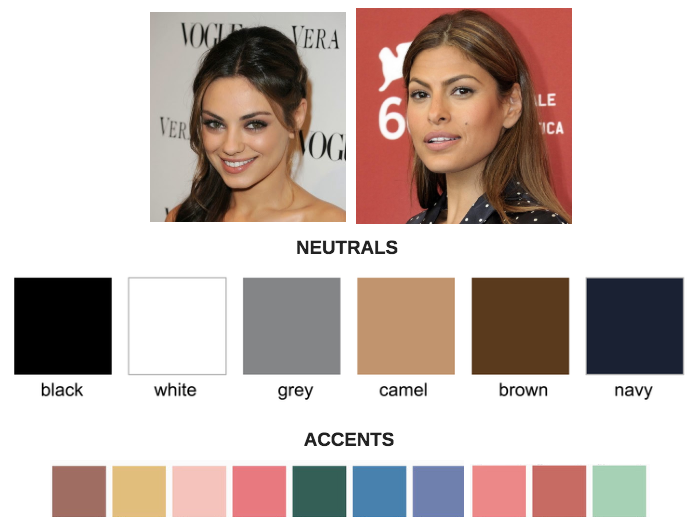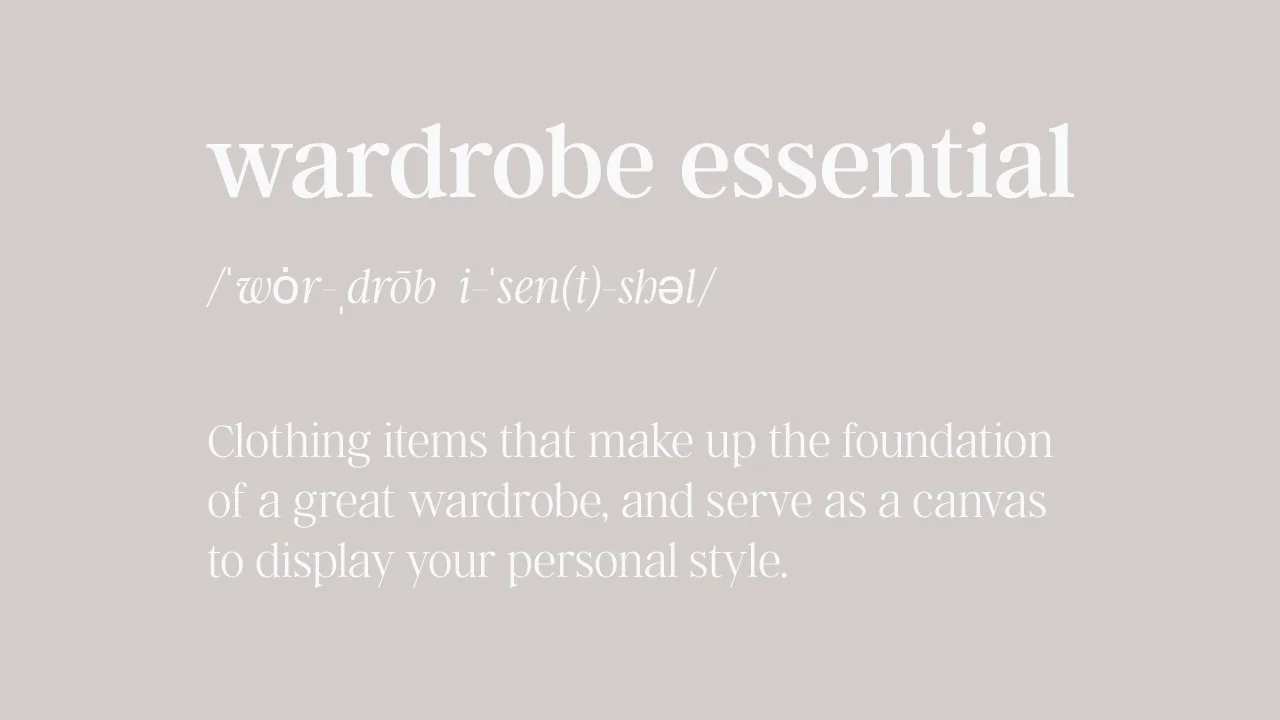Today I want to talk about color. We're going to review the difference between colors and neutrals when it comes to your wardrobe, 3 easy methods you can use to establish your ideal color palette and an example color palette that works all year long. First things first, a cohesive balance of color (neutrals & accents) is essential for a wardrobe that can be mixed and matched all year. To fully understand color and color theory we could easily dedicate months if not years to breaking things down based on undertone, hair color, eye color etc but for the sake of this post I'm going to keep things very general so that you can easily implement these tactics into your own closet.
COLORS VS NEUTRALS
Before we delve deeper into a few of the top ways you can pick a color palette for your wardrobe, let's differentiate between the two main categories of colors we'll be discussing - neutrals (your base) and accent colors.
NEUTRALS: When it comes to your closet, neutrals serve as an anchor for bolder shades. These typically make up the majority of your closet and can be worn by anyone regardless of their personal coloring (though there are some nuances to this that we will discuss in a bit). Common neutrals are black, white, grey, camel and even denim and blush pink.
ACCENT COLORS: The accent colors in your wardrobe are the bolder, more vibrant shades that you feel amazing in and help showcase your personal style.
For maximum versatility, they should also all be in a similar color family so that they can be mixed and matched endlessly.
WARM VS COOL COLORS
Before you can choose a color palette for your wardrobe, it's important to understand that all colors (excluding true black and true white) are broken into two main categories - warm and cool. Warm colors contain more yellow and cool colors contain more blue and generally speaking a cohesive closet has one or the other, and rarely both. The reason for this is because warm tends to compliment and "go with" warm, and cool with cool. By choosing shades in the same color family and temperature, you help ensure that everything in your closet will go together. An easy way to visualize this split is on a color wheel like the one here.
CHOOSING A COLOR PALETTE: 3 BASIC METHODS
Now that we know that colors are broken into two main categories, we can break them down even further to select the best colors for your wardrobe. For a well-rounded closet of pieces that can be mixed and matched effortlessly, you will need a nice balance of neutrals (at least 1) and accent colors (at least 1). To hone in on the colors that will work the best for you, you have a few options that I've outlined below and will break down into more detail on the next few pages.
METHOD 1. UNIVERSAL COLORS: You can select colors that are thought to be universally flattering. These colors are a perfect balance of warm (yellow) and cool (blue) tones and for this reason, are said to suit everyone - despite their individual undertone.
METHOD 2. COLORS BASED ON UNDERTONE: You can select colors that are specifically chosen to compliment your personal coloring and undertone. The theory here is that colors that compliment your skin's undertone act almost like makeup and help to liven and enhance your complexion. They are said to make you look your best and are thought to make your eyes and teeth appear whiter, your skin more even and your mouth more vibrant.
METHOD 3. ANY COLORS YOU WANT: You can disregard both of these methods and wear whatever colors you want. Always remember that fashion should be fun and you should wear whatever makes you feel your best!
METHOD 1: UNIVERSAL COLORS
First up are the universal colors.
These colors are a perfect balance of cool (blue) and warm (yellow) so they are largely considered to be ideal colors for everyone, regardless of their personal coloring or undertone.
According to many color theory experts, these colors are true black, pure white, blush pink (with some debate), eggplant, teal and true red (you have to ensure that it doesn't lean too red or too orange).
METHOD 2: COLORS BASED ON UNDERTONE: COOL, WARM, NEUTRAL, OLIVE
The next method is to select either cool or warm accent colors to suit your personal undertones. To take this route, you need to first identify your skin tone and undertone so let's differentiate between the two, and then go over a few easy ways to determine what you have.
SKIN TONE VS UNDERTONE
Much like color theory in general, we could spend hours going over the nuances of skin tone and undertone and how they all work together with your hair color and eye color, but today we're going to keep things very top line. I'll be delving deeper into this in some upcoming videos.
SKIN TONE: This refers to the surface color or level of pigment in your skin and can change depending on any number of things - sun exposure, hormones, self tanner etc. Skin tone is generally broken into four major categories - I've left out tan but that is sometimes included as a fifth category between medium and dark.
- Fair – You’re very pale, and often burn easily.
- Light – You're not the lightest of the light, but are still generally pale.
- Medium – Your skin is, as the name suggests, medium in saturation.
- Dark – You have a dark and/or a very deep complexion
UNDERTONE: Now that you know you're skin tone, we can discuss undertone. Unlike your skin tone, your undertone will never change and is determined by the amount of blue, yellow, green or red that you have in your skin. Even though your unique skin consists of countless colors all blending together, one of these four will be more prominent than the others which is what gives you your personal undertone. Generally speaking there are 4 common undertones.
- Cool – Your skin leans pink, or red
- Warm – Your skin leans peachy, yellow, or golden
- Neutral – Your skin has some mixture of these colors
- Olive - Your skin has a clear green cast to it. This one is tricky because it's often mistaken for warm skin but olive skin actually leans slightly more neutral than warm, and has a natural green pigment that is visible on the surface of the skin. This can sometimes come across as almost gray or ashen and it can be very difficult to find makeup that works with your complexion.
HOW TO DETERMINE YOUR UNDERTONE
If you're unsure what your undertone is, I've outlined some common ways to figure it out here. Each of these methods is easy to do on yourself and for best results, you should try them in natural day light without makeup on. Also, if you're ever unsure, don't hesitate to ask a friend or family member for help because sometimes it's easier to see undertone on someone else.
VEIN TEST
Look at the veins on your wrist in natural daylight. If your veins appear blue, you’re cool toned. If your veins appear green, you’re warm toned or olive. If your veins are a little of both, you’re neutral or even olive.
METAL TEST
Next, hold a piece of gold jewelry and a piece of silver jewelry up to your skin. If the gold jewelry makes your eyes shine, your teeth pop and your features soft, then you're warm toned. If silver jewelry makes your eyes sparkle, your smile bright and your features dance, you're cool toned. If both suit you, you're likely neutral toned or potentially olive.
TOWEL TEST
For this last test, wrap your body and hair in pure white towels and examine your bare face, neck and shoulders in natural daylight. If your skin appears yellow you have warm skin. If your skin looks blueish or flushed, you're likely cool toned. If your skin is somewhere in the middle or looks grey or ashen, you're likely neutral or potentially olive.
*Also, in case it helps you to better understand your own undertone I'm a medium olive with high contrast (my hair and eyes are much darker than my skin). My undertone can appear warm depending on what I'm wearing and I'm often mischaracterized as being warm. Foundations that are too yellow turn bright orange on me and foundations that are too neutral can appear too washed out and just not right. My ideal shades are usually a mix of both and I tend to have better luck with neutral undertones that are sheered out and warmed up with blush and bronzer (Tarte Amazonian Clay in Exposed is a great one for this), than I do with warm undertones. Some of my favorite true olive foundations are by Giorgio Armani, Makeup Forever, Koh Gen Do & Alima Pure but I've also had great luck with BareMinerals (because it's so sheer), Chanel (their now discontinued Perfection Lumiere in shade 30 was perfect for me!) & some Lancome, Dior & YSL in the past.
SOME EXAMPLE COLOR PALETTES FOR EACH UNDERTONE
COOL NEUTRALS & ACCENT COLORS
Now that you know your undertone, you can select your neutral and accent colors accordingly. If you're cool toned, blue based accent colors will compliment you beautifully. If you're very fair and cool, you may prefer to break up bright white with accessories that compliment your undertone. Also you may love the contrast that black offers, but may prefer wearing it in a softer fabric and paired with sparking jewelry or metallic accessories for a brightening effect.
WARM NEUTRALS & ACCENT COLORS
If you're warm, yellow based colors are wonderful options for you. Like the cool colors above, these colors are very top line and only show a small segment of the colors you can choose from. You may also prefer warm neutrals like taupe, cappuccino, cream, and mushroom gray over cooler versions of these shades. You may also prefer to wear black away from your face (in your pants, skirts, shorts etc), and you may feel better in cream or ivory instead of pure white.
NEUTRAL NEUTRALS & ACCENT COLORS
If you're neutral toned, selecting your accent colors may be incredibly easy because you can theoretically wear every color under the sun, but many stylists and color theorists recommend avoiding anything too saturated - especially if you have lower contrast. Instead, you may prefer muted colors like pale blue and you may also love off-white instead of pure white and mid-range greys.
OLIVE NEUTRALS & ACCENT COLORS
Much like neutral undertones, olive skin can theoretically wear practically any color with little difficulty but this can largely depend on your overtones (warm or cool) and your contrast (hair and eye color in relation to your skin tone). That said though, many color theorists recommend avoiding pastels and any colors that pull too much of your overtones. When it comes to olive skin, it's all a matter of testing and trying different colors until you find what you love but I'm also working on a video that will go into more detail so be on the lookout for that.
AN EXAMPLE COLOR PALETTE FOR ALL YEAR
And there you have it! A very quick crash course in color and how you can identify the colors that will work the best for your personal wardrobe. I want to leave you with an example color palette using the information we've just gone over.
This is a classic palette that can work year-round and allow plenty of freedom for accessorizing with more vibrant shades. As you can see, the neutrals are black, white and camel (I've gone with a mid range camel here but you can swap it with a warmer or cooler camel to suit your preferences), and accent colors of blue (which will be found in the denim) and one of the universal colors - I've selected blush pink because I really like that color but you can easily swap this out for any color you like.
